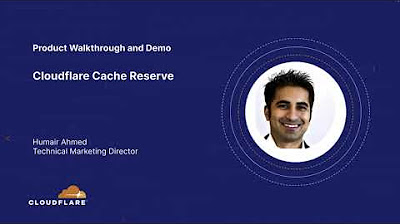HTTP Caching with E-Tags - (Explained by Example)
Summary
TLDRIn this video, Hussein Nasser explores HTTP E-tags, a caching mechanism designed to improve web performance by reducing bandwidth usage and speeding up responses. E-tags allow clients to verify if a resource has changed, avoiding redundant data transfers. While they offer significant benefits, such as faster load times and better concurrency control, they also have drawbacks, such as issues with load balancing and privacy concerns when used for tracking users. The video discusses how E-tags work, their pros and cons, and how they are implemented in real-world applications like ArcGIS Pro.
Takeaways
- 😀 ETags are used to validate web cache and improve performance by ensuring that only changed resources are re-downloaded from the server.
- 😀 When a client makes an HTTP request, the server responds with a resource and an associated ETag, which the client stores for future use.
- 😀 In subsequent requests, the client can send the stored ETag to the server, and if the resource hasn't changed, the server only returns a 'not modified' response, saving bandwidth and time.
- 😀 ETags reduce server load because the server doesn't have to re-send large resources if they haven't changed.
- 😀 Using ETags can improve performance for users with limited bandwidth or in regions with slower network speeds.
- 😀 ETags can help maintain consistency in database transactions by ensuring that resources are only updated if no changes have occurred since the last request.
- 😀 Load balancing issues arise when ETags are generated differently across multiple servers, leading to potential inconsistencies in cache validation.
- 😀 To avoid load balancing issues, servers can be configured to generate consistent ETags across all instances, ensuring cache validation is accurate.
- 😀 Writing custom HTTP clients requires handling ETags correctly, which adds complexity to the code, especially for cache management and ensuring the correct resource is served.
- 😀 Some companies, like Hulu, have been criticized for using ETags to track users across sessions, as they cannot be easily deleted, unlike cookies.
- 😀 Despite privacy concerns, ETags offer a useful caching mechanism that can reduce the need for custom server-side caching solutions, but they must be used responsibly.
Q & A
What is the primary purpose of HTTP ETags?
-The primary purpose of HTTP ETags is to validate web caches and improve performance by allowing clients to check if a resource has changed, thus reducing unnecessary data transfer.
How do HTTP ETags work in practice?
-When a client requests a resource, the server returns the resource along with an ETag. On subsequent requests, the client sends the ETag in an `If-None-Match` header. If the resource hasn't changed, the server responds with a '304 Not Modified' status, reducing the need to transfer the resource again.
What are the main benefits of using HTTP ETags?
-The main benefits of HTTP ETags are improved performance through reduced data transfer, better bandwidth utilization, and enhanced caching, especially for clients with limited bandwidth or when building custom applications.
How do ETags contribute to concurrency and consistency in databases?
-ETags can be used to ensure consistency in database transactions by allowing clients to check if a resource has changed before modifying it. If the ETag doesn't match, the operation fails, ensuring that the resource hasn't been modified by another process in the meantime.
What is a major drawback of using HTTP ETags with load balancers?
-A major drawback is that if a website is behind a load balancer with multiple servers, each server might generate different ETags for the same resource. This causes inconsistency, resulting in unnecessary cache misses and redundant data transfers.
Can the load balancing issue with ETags be fixed? If so, how?
-Yes, the load balancing issue can be fixed by configuring servers to generate consistent ETags across all nodes in a cluster. This requires server configuration (e.g., in Apache or IIS) to ensure that ETags are consistent regardless of which server handles the request.
What additional complexity does using HTTP ETags introduce for developers?
-For developers writing their own HTTP clients, using ETags introduces the complexity of managing the `If-None-Match` header, handling ETag validation, and ensuring that caches are properly invalidated or reused. This requires extra coding effort and attention to detail.
What is the controversy surrounding the use of ETags for tracking users?
-Some companies, like Hulu, have used ETags as a way to track users without their consent. Unlike cookies, ETags are harder for users to delete, and companies can use them to track behavior across sessions, effectively building a user profile even without knowing their identity.
Why do some companies prefer using ETags over cookies for user tracking?
-Companies may prefer using ETags over cookies because ETags are managed by the browser and cannot be easily deleted by users. This makes ETags a persistent identifier that can track users across sessions without the need for cookies.
How does HTTP ETag usage affect the privacy of users?
-The use of ETags for tracking can infringe on user privacy because it allows websites to track user behavior across sessions without their knowledge or consent. Unlike cookies, ETags are harder to purge, making it a potentially invasive method of user tracking.
Outlines

Esta sección está disponible solo para usuarios con suscripción. Por favor, mejora tu plan para acceder a esta parte.
Mejorar ahoraMindmap

Esta sección está disponible solo para usuarios con suscripción. Por favor, mejora tu plan para acceder a esta parte.
Mejorar ahoraKeywords

Esta sección está disponible solo para usuarios con suscripción. Por favor, mejora tu plan para acceder a esta parte.
Mejorar ahoraHighlights

Esta sección está disponible solo para usuarios con suscripción. Por favor, mejora tu plan para acceder a esta parte.
Mejorar ahoraTranscripts

Esta sección está disponible solo para usuarios con suscripción. Por favor, mejora tu plan para acceder a esta parte.
Mejorar ahora5.0 / 5 (0 votes)






